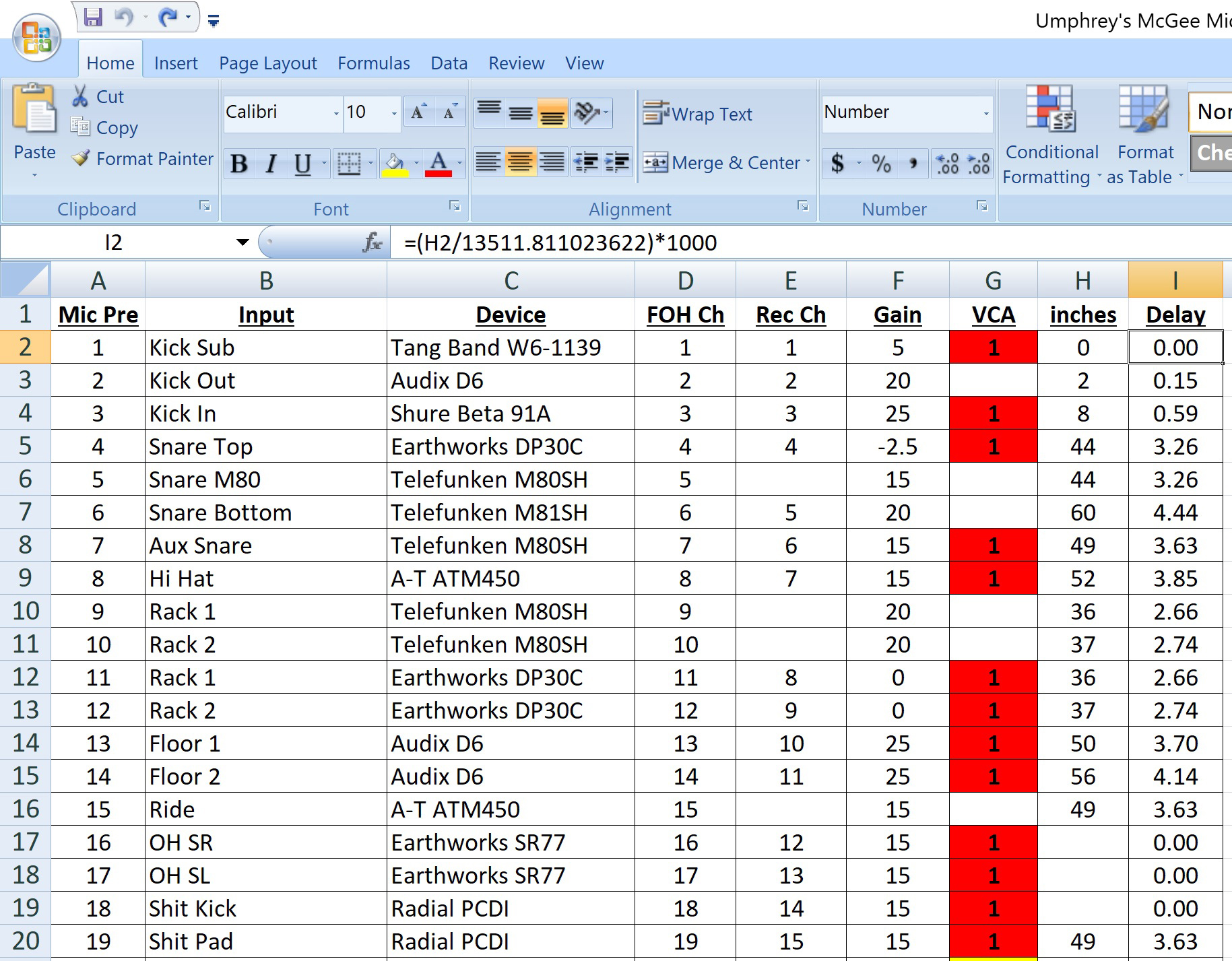Accurate Representation
Music is enjoyed in our minds. The emotions we seek are created when our brains translate airborne pressure vibrations into synaptic excitation and then compare those to previous experience. Our brains do an extremely good job discerning the difference between sounds produced by the original source and sounds emanating from a reproduction of the original source.
I want the original sound of the band to be accurately represented in my mix. I do not want the audience to be distracted by the mix. It is a sound engineer’s goal to become invisible and facilitate an emotional connection between artist and audience, regardless of production level.
For UM, this means that the drum kit in my mix should sound exactly like drummer Kris Myers’ perfectly tuned Pearl Reference drum kit. I want the drums to sound like the listener is slightly above and in front of the drum kit, but at the volume I choose. To get this, I designed a way to combine multiple sources that would result in the drum mix I want.
Every mix engineer recalls the advice handed down from on high: It’s better to move the microphone than move the EQ knob. If the mic doesn’t sound good on the source, swap it for another that sounds better. But who has time to reposition the mic when soundcheck is in 20 minutes? Not to mention that most mic lockers are stocked to be homogeneous and interchangeable, with the same predictable options.
So what are we looking for when we move or swap the mics? Remember, I’m striving for truth in reproduction. Assuming the drummer (or tech) can tune a drum kit to sound great, then I should just have to make it louder, without changing the tone of any of the drums or cymbals. Choose a mic that has a flat frequency response, both on- and off-axis.
I knew that Earthworks mics could help me solve that problem. Known for ruler-flat response and extremely accurate translation of fast transients, the SR Series of cardioid and hypercardioid mics are a perfect choice for an accurate, truthful mix.

One of the first mic changes I made was switching the drum overheads to Earthworks SR30s, and from a traditional separated pair of stands to an XY coincidental pair suspended directly over the snare drum mic. I was immediately impressed by how much more of the overheads I could use in my mix.
Soon I muted hi-hat, ride cymbal and snare bottom mics. Didn’t need them. The SR30s were providing an awesome stereo image of the top of the drum kit. Plenty of hi-hat and cymbal combined with the pop and snap of the snare and toms.
The “close” mics on the snare and toms were chosen to reinforce the rich low-mid overtones produced by the head and shells. I finally settled on a pair of Earthworks DP30/Cs on the rack toms and Audix D6s on the floor toms, with another DP30/C on the snare top and a Telefunken M80SH on the aux snare.





